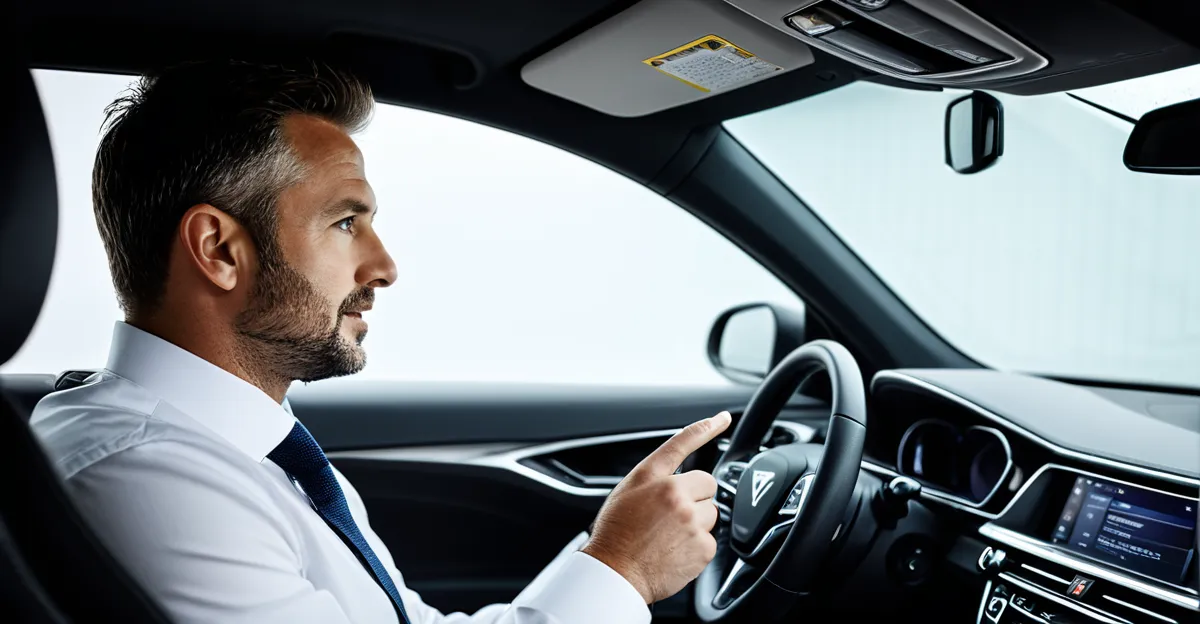Strategies Driving Enhanced Customer Experience in the UK Automotive Sector
The UK automotive sector customer experience has significantly evolved through innovative technology strategies and targeted industry initiatives. Companies focus heavily on digital transformation tailored to customer needs, aiming to make every interaction more seamless and engaging.
Central to these advancements is the emphasis on customer-centric business models. This approach ensures that technological tools do not merely automate processes but actively improve the quality of service delivery. For example, many firms leverage data analytics to anticipate customer preferences and streamline communications.
Additional reading : How is the UK automotive sector addressing global competition?
Across the sector, digital platforms, connectivity improvements, and AI-powered support systems demonstrate the commitment to enhancing user engagement. Leading UK automotive companies are adopting such technologies not just internally but also to build immersive experiences, from virtual showrooms to personalized post-sales support.
This strategic integration of innovative tools highlights how industry initiatives drive measurable improvement in customer satisfaction. By aligning digital efforts with customer expectations, UK automotive brands sustain competitive advantage in an increasingly tech-savvy marketplace.
Also to read : How are UK automakers preparing for future mobility trends?
Digital Retail Platforms and the Shift to Online Customer Journeys
The UK automotive sector customer experience is undergoing a transformative shift driven by advanced digital retail solutions. Online automotive sales have surged as manufacturers and dealerships increasingly adopt digital platforms to enhance the customer journey. These platforms enable seamless access to vehicle information, pricing, and financing options directly from consumers’ devices, fostering a more convenient and personalized buying process.
What specific features define these digital retail platforms in the UK automotive context? They typically include virtual showrooms, interactive configurators, and streamlined online purchasing tools. Virtual showrooms, for example, allow customers to explore vehicles in high detail without visiting a physical location. This technology strategy supports buyers in making informed decisions by visualizing car models, colors, and trims in a highly immersive digital environment.
Furthermore, personalised online experiences extend to virtual consultations and remote test drives. How do remote test drives operate? Through coordinated scheduling and innovative video or augmented reality technology, potential buyers can experience vehicles from their homes. This approach not only enhances convenience but also caters to evolving consumer preferences shaped by recent social trends.
Leading UK automotive companies spearheading these industry initiatives report measurable improvements in engagement metrics and sales conversion rates. By integrating digital retail tools into their distribution networks, businesses can track user behavior and tailor communications accordingly, reinforcing the customer-centric business models central to UK market growth. Such platforms also support aftersales services, allowing real-time updates and direct communication channels that contribute to long-term customer satisfaction.
In summary, digital retail platforms and the corresponding shift to online customer journeys exemplify the potential of technology strategies within the UK automotive sector to revolutionize the buying experience. These solutions not only respond to modern consumer demands but also extend brands’ reach beyond traditional dealership ecosystems.
Connected Vehicle Technologies and In-Car Digital Services
The rise of connected vehicles is reshaping the UK automotive sector customer experience by embedding advanced in-car technology directly into the driving environment. These technologies utilize telematics—systems that combine telecommunications and informatics—to gather and transmit real-time data on vehicle performance, location, and driver behavior. This integration enhances safety, convenience, and personalization during every journey.
How do connected vehicle features enhance driver and passenger experience? Primarily through seamless connectivity that allows access to navigation updates, infotainment options, and hands-free communication within the vehicle. For instance, drivers receive real-time traffic alerts and route optimizations, reducing travel time and stress. Passengers benefit from personalized media streaming and connected services, making travel more enjoyable.
Moreover, real-time data usage facilitates proactive maintenance by alerting both drivers and dealerships of potential mechanical issues before breakdowns occur. This supports industry initiatives focused on preventing unexpected service disruptions and improving overall vehicle reliability. By leveraging remote diagnostics, automotive companies can schedule timely repairs, reducing downtime and enhancing customer satisfaction.
Many UK automotive brands are partnering with technology firms to innovate their in-car digital services. Such collaborations have enabled advancements in smart mobility features—ranging from voice-activated controls to integration with smartphones and smart home devices. These technology strategies demonstrate a commitment to creating an interconnected ecosystem that prioritizes the customer’s convenience and safety.
In summary, the adoption of connected vehicle technologies embodies a pivotal industry initiative driving better service delivery and customer engagement across the UK automotive sector. These systems blend cutting-edge telematics with user-centric design, making the in-car experience more responsive, intuitive, and aligned with modern expectations.
Artificial Intelligence, Automation, and Customer Support Innovation
Artificial intelligence (AI) and automation are transforming the UK automotive sector customer experience by introducing sophisticated tools that enhance responsiveness and personalization. How does automotive AI improve customer interactions? Primarily through chatbots and virtual assistants that provide instant, accurate responses to common queries. These AI-driven customer support systems are available 24/7, reducing wait times and freeing human agents to handle more complex issues.
Beyond basic queries, automation enables highly tailored marketing communications based on customer data analysis. For example, predictive analytics identify when a vehicle might require maintenance, prompting timely service reminders that feel personalized rather than generic. Such technology strategies improve customer satisfaction by anticipating needs and streamlining experiences.
Additionally, AI-powered tools support aftersales services by automating appointment scheduling, follow-ups, and feedback collection. This ongoing engagement strengthens brand loyalty by making customers feel valued throughout the ownership lifecycle. Leading UK automotive companies deploy these solutions, reporting increased efficiency and enhanced customer sentiment.
In summary, the integration of automotive AI, automated workflows, and predictive analytics represents a critical industry initiative that elevates the overall UK automotive sector customer experience. This fusion of technology and customer focus drives smarter, faster, and more meaningful service encounters.





